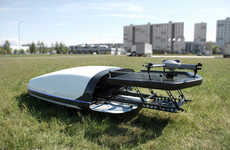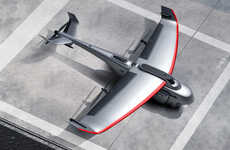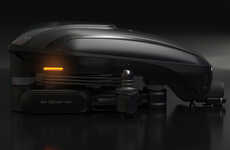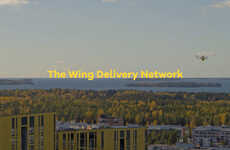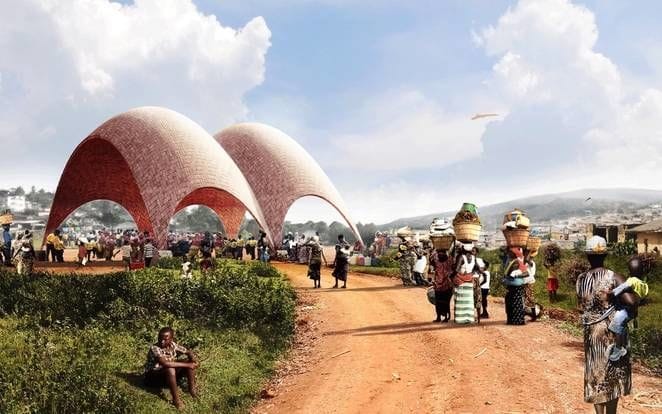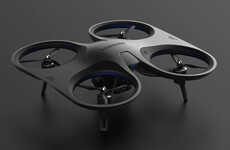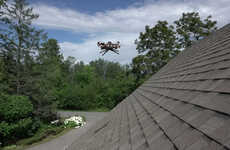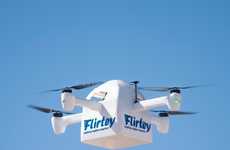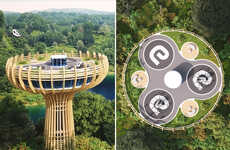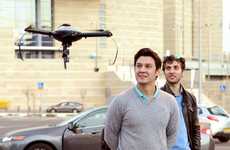
This Structure Provides a Safe Place for Drones to Land
Katherine Pendrill — September 23, 2015 — Art & Design
References: fosterandpartners & treehugger
Norman Foster recently unveiled designs for a unique structure that would offer a safe place for drones to land. Although the use of drones is becoming more widespread, there is still a lack of infrastructure designed to accommodate these devices. Foster aims to build a 'Droneport' that would make it easier to use these devices.
Foster argues that drones have the unique opportunity to transcend geographical barriers and provide vital services such as the delivery of medical supplies. In order to use drones for community projects, these devices need a safe place to land in densely packed areas. The Droneport provides a solution to this problem by offering a safe and convenient place for drones to land. Foster argues that this kind of structure would be particularly beneficial for African communities that lack traditional infrastructure such as roads and highways.
While the Droneport is currently just a concept, the idea does demonstrate the need for communities to adapt existing infrastructure to accommodate new technology.
Foster argues that drones have the unique opportunity to transcend geographical barriers and provide vital services such as the delivery of medical supplies. In order to use drones for community projects, these devices need a safe place to land in densely packed areas. The Droneport provides a solution to this problem by offering a safe and convenient place for drones to land. Foster argues that this kind of structure would be particularly beneficial for African communities that lack traditional infrastructure such as roads and highways.
While the Droneport is currently just a concept, the idea does demonstrate the need for communities to adapt existing infrastructure to accommodate new technology.
Trend Themes
1. Community-supporting Drone Stations - Creating designated landing stations for drones to address the lack of infrastructure and enable the use of drones for community services, such as medical supply deliveries.
2. Transcending Geographical Barriers - Exploring the potential of drones to overcome geographical limitations and provide vital services to communities in remote areas without traditional infrastructure.
3. Adapting Infrastructure for New Technology - Recognizing the need for communities to modify existing infrastructure to meet the demands of emerging technologies like drones.
Industry Implications
1. Architecture - Opportunity for architects and urban planners to incorporate designated landing stations for drones in their designs, enhancing the functionality and accessibility of communities.
2. Transportation and Logistics - Potential for companies in the transportation and logistics industry to develop specialized services for drone landing, storage, and maintenance, catering to the growing demand of drone usage.
3. Healthcare and Medical Supplies - Disruptive innovation opportunity for healthcare organizations to leverage drones for efficient and timely delivery of medical supplies to remote and underserved areas, supported by the availability of designated landing stations.
1.9
Score
Popularity
Activity
Freshness

